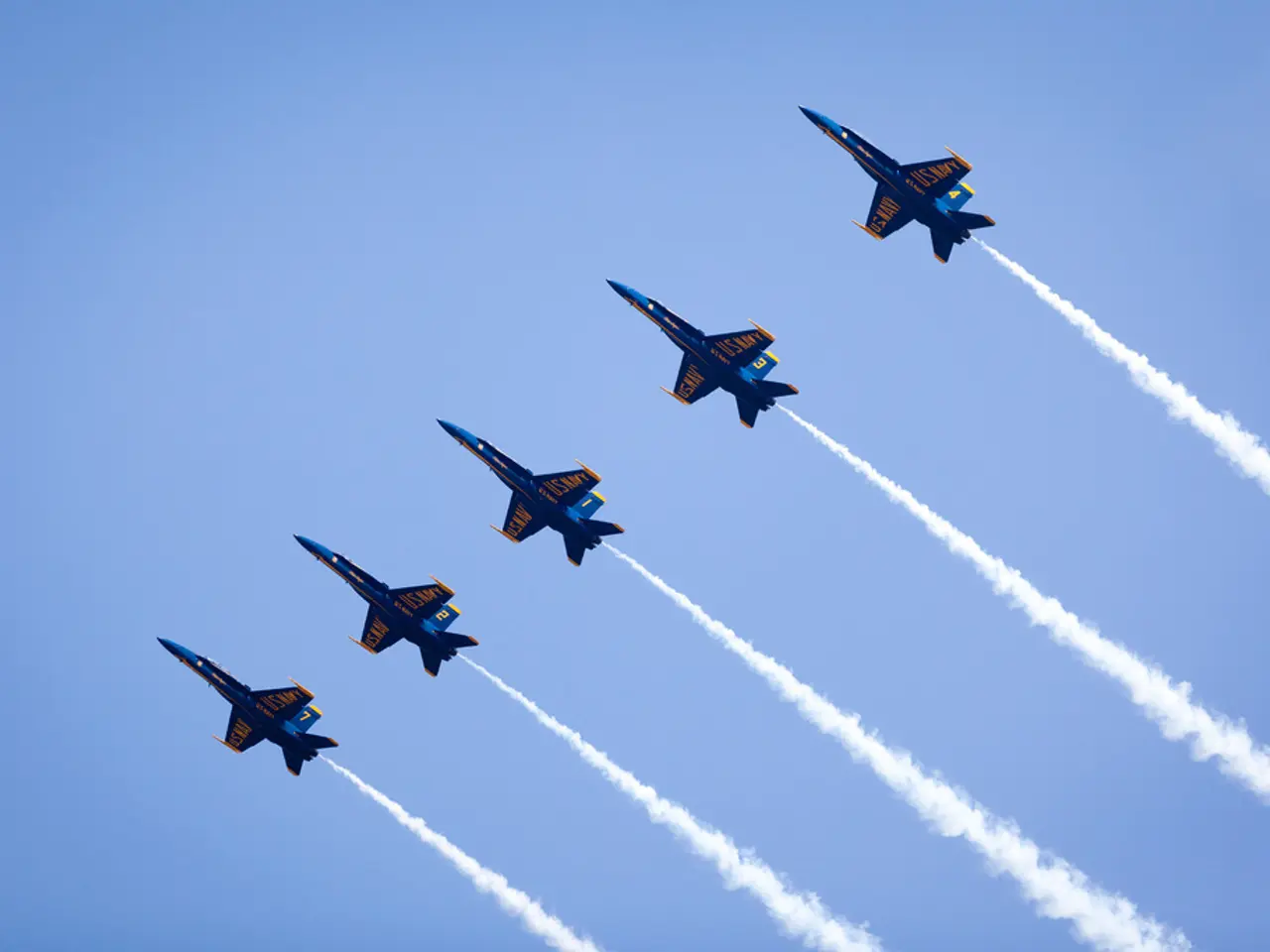Aeronautical circumstances discussed by Russian Aviation following volcanic eruption in Kamchatka
In a series of extraordinary events, seven volcanoes in Kamchatka, Russia, have erupted simultaneously following a massive magnitude 8.8 earthquake that occurred off the Kamchatka Peninsula on July 30, 2025. Among these, the Klyuchevskoy Volcano and the Krasheninnikov Volcano have been particularly active.
The Klyuchevskoy Volcano, standing at 1,856 meters high, has been experiencing ongoing eruptive activity with ash emissions since July 30. The Krasheninnikov Volcano, on the other hand, had its first recorded eruption since human observation began, with a 6 km high eruption plume on August 3, 2025. This marks a significant development in the volcanic activity of the region.
The earthquake has caused significant geological shifts, with part of southern Kamchatka shifting southeast by up to 2 meters. This tectonic instability is a cause for concern, as aftershocks continue, including a strong magnitude 6 aftershock. Seismic experts indicate a high probability of additional major aftershocks (M7 or greater) in the coming weeks, which could maintain or increase volcanic unrest in the area.
The Kamchatka Volcanic Eruption Response Team (KVERT) is closely monitoring the region, describing the situation as "extremely rare" and dynamic, demanding ongoing vigilance for potential changes or new eruptions. The State Corporation for Air Traffic Management has published NOTAMs advising of increased volcanic activity, and crews are advised to consider current NOTAMs, meteorological data, and volcanic activity information when planning flights.
The ash cloud from Krasheninnikov reached a height of 6,000 meters, but no ashfall was reported in populated areas. The ash cloud from Krasheninnikov spread eastward towards the Pacific Ocean, and despite the eruption, no NOTAMs or aviation safety measures have been issued due to its impact.
State Corporation specialists are providing assistance to crews, and the final decision on ash cloud avoidance, forced landing, or continued flight remains with the aircraft commander. KVERT issued a VONA for Klyuchevskoy volcano with a red aviation hazard code, but the ash cloud from Krasheninnikov did not affect any NOTAMs or aviation safety measures.
Kamchatka Governor Vladimir Solodov reported a magnitude of 8.8 for the earthquake, and authorities and scientific teams are actively monitoring the region due to these unprecedented multiple simultaneous volcanic eruptions triggered by the massive quake and ongoing aftershocks. It is a time of heightened vigilance and close collaboration between scientists, authorities, and aviation personnel as they navigate this unique geological event.
[1] Kamchatka Volcanic Eruption Response Team (KVERT) website: [www.kvert.si/en/] [2] State Corporation for Air Traffic Management website: [www.dgca.ru/] [3] Kamchatka Region Governor's website: [www.gov-kamchatka.ru/] [4] Russian Academy of Sciences Institute of Volcanology and Seismology website: [www.ivs.nsc.ru/] [5] United States Geological Survey Volcano Hazards Program website: [www.volcano.si.edu/]
- The unusual simultaneous eruption of seven volcanoes in Kamchatka, Russia, including Klyuchevskoy and Krasheninnikov, has drawn the attention of environmental scientists, particularly those specializing in volcanology and seismology.
- Amidst the ongoing climate-change discussions, the geological upheaval in Kamchatka serves as a stark reminder of the interconnectedness of science, industry, and the environment, as it affects aviation, finance, and space-and-astronomy sectors as well.
- The increase in volcanic activity has prompted the aerospace industry to be vigilant and collaborate with the Kamchatka Volcanic Eruption Response Team (KVERT) to ensure aircraft safety and minimize any potential impact on global air traffic.
- Despite the aggressive eruption of Krasheninnikov and the ongoing volcanic unrest at Klyuchevskoy, finance experts observe a surge in interest from universities, research institutions, and even private investors in environmental-science projects related to volcanology, seismology, and climatology, as the world witnesses this unusual geological spectacle and strives to understand its implications for our planet.








